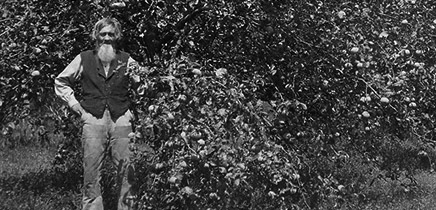We kicked off the fund drive on July 1, 2019. An event was held that fall at Charlson Meadows, with Swedish food, lovely piano music by Carolyn Spargo, and a speaker from Rethos. The program focused on the importance of preserving historic properties and the significance of the Peterson farmhouse and why we needed to save it. Over the next few months, I presented to the Lions, several Rotaries, the MN Swedish Genealogical Society, and the American Swedish Institute, and was invited on an all-expenses paid trip to Colorado to speak to the Swedish group there. Funds were coming in. As we approached the holidays in 2019, we had made a good start. Then, Covid hit.
There were very few people or companies that were not affected in one way or another. Foundations that had previously voiced support for our project changed their giving priorities to food shelves. The CCHS was shut down completely for over a year. The Jeffris Family Foundation was contacted to ask for an extension. It was turned down due to legal reasons. Making things even harsher, was the knowledge that our feasibility study showed we could raise the funds but needed the foundations and grants to do so. A year and a half into the campaign, the CCHS Board of Directors made the hard decision to pause the Peterson farm capital campaign for three months. How could we morally ask for funds to restore a building, when people were in need of the basic essentials for life? At the end of 2019, we had raised about $177,000, and it was time to start thinking out of the box.
Rereading the contract with the Jeffris Foundation, I realized that we had a couple of options. People didn’t always have money to donate, but they did have skills and items they could donate that would count toward the total. An unusual item that came in was period appropriate gutters. Skilled labor would count IF the person donated their skill toward the project. An example would be an electrician who donated time to install lights. A carpenter, an electrician and architectural firm agreed to donate their time. These donated services added up to just over $50,000.
In 2020, I wrote a Legacy construction grant for the farmhouse, granary and south barn. The portion for the farmhouse amounted to $60,230. The draft was submitted that summer and the final draft that fall. The day the grant went before the HRAC board I was on pins and needles. There was a lot on the line. Scanning from the bottom up, I held my breath. Our grant landed in the top tier. It was approved by HRAC in a matter of minutes.
The end of 2020, we had raised $225,902. it sounds like a lot, but in fact we were now halfway through the drive and were not yet halfway to our goal.
Timing is always the hardest part with a challenge grant, doubly so when another grant is in the mix. Per the Jeffris rules, the Legacy grant could not be approved prior to the start of the Jeffris campaign. It also needed to be approved by all parties and needed to be designated by MNHS toward the challenge campaign. A separate bank account was needed for the Jeffris money, but the construction drawing grant checks were for all the buildings on the farm. Keeping accurate and complete records was imperative. Lawyers on both sides needed to agree to the terms. In this case, MNHS and the Jeffris attorneys were wonderful to deal with, since our goals were the same; save the farmhouse. The cost for the farmhouse construction drawings and hence money for the challenge campaign was $60,230. The drawings were completed on 4/16/21 and subsequently approved by the grant’s office. That same year, with MNHS approved construction drawings in hand, I applied for an exterior construction grant for the house. Due to the time limit, we had one more shot with Legacy, if we missed it would be too late to reapply.
Knowing grants are never a certain thing, we hired a company to compile a list of foundations that matched our needs for the Peterson farm. I started sending Letters of Inquiry/introduction.
In December of 2021, our construction grant came before the HRAC board. They commented that the construction drawings were incomplete, therefore the grant was declined. I was devastated.
At this point, our fundraising committee and many on the CCHS Board of Directors felt we had failed. Tom Jeffris called me numerous times to cheer me up and lend his support.
The end of 2021 we had raised $320,094 in large part due to several GiveMN yearly events where an anonymous donor pledged to match donations. We had six months to go and $180,000 to raise. Do you lay down and die or do you look farther outside the box and refuse to give up? There was no option, we had to give it our all. The thought of losing the $250,000 Jeffris money was one we couldn’t let go of. We had six months and we all agreed that either we would win this campaign, or we give it our all until we ran out of time.
After taking the holidays to lick our wounds, the fundraising committee met in January to re-examine our options. Several of us had seen Covid funds floating around and we discussed options about how we might tap into those. A letter arrived from a foundation that made it clear that they couldn’t help as they had changed their giving criteria to giving to food shelves. It was the ammunition we needed. The CCHS had also received Covid funds due to our mandatory shut down, giving us the flexibility to request that the County designate our Q1 appropriation to the Jeffris campaign. All campaign funds required a signed pledge form to be counted for the campaign. I made the call to the County and made the sales pitch. It wouldn’t cost the County anything to designate our quarterly appropriation to the campaign, as it was already in the budget. Then the fundraising committee voted to go one step further. We felt we could raise an additional $40,000, so we would ask for an additional $85,000 using the letter we had received that stated the change in giving priorities due to Covid. This made the argument that Covid had indeed horribly affected our campaign. We also made note that this campaign had raised seven times more than any time in the CCHS history of fundraising. The letter was written, sent off to the County and a date set for us to present in front of the Carver County Board of Commissioners.
Before the day arrived for the presentation, we struggled to dig for the remaining $40,000. Several donations came in dropping the amount needed to $18,000. A donor called and said he would donate $14,000, IF we could raise the other $4,000. A check for $3000 came in then a check for $650 and finally a $400 check and the donors $14,000. Now, if only we could get the requested amount from the County.
The day came. The majority of our CCHS board showed up. More people showed up remotely, including our friends in Sweden. Letters of support came from the Swedish Institute, our Swedish Andrew Peterson Society, all previous CCHS directors, and Representative Jim Nash. I presented. This was it, either we received the requested funds and get the additional $250,000 from the Jeffris Foundation, or we would be done and have to do as much work as we could with the funds raised.
A motion was made to approve the appropriation. All commissioners were in agreement, THEN, Commissioner Udermann spoke up making a motion to get the project really moving. He motioned to appropriate $500,000. A discussion took place with all Commissioners agreeing that they wanted to support the project but moving ahead as motioned had never been done before. It felt like a half hour but was probably 15 minutes. Finally, the motion was made and Commissioners Udermann, Fahey and Workman voted in favor of the $500,000 with Lynch and Degler against, noting that they supported the CCHS, but felt the larger amount should follow the proper procedure. Motion passed. We had the funds we needed to complete the campaign and then some. I was in shock.
The $500,000 campaign goal was verified by the Jeffris Family Foundation three weeks ago. Last Saturday, a check with a lot of zeros arrived via certified mail. I held it and looked at it for a long time. Monday, I deposited the $250,000 check, then stared even longer at the amount in the bank account. Now, work can begin to save Andrew’s house.
Four other organizations started a capital campaign the same time we did, with the Jeffris Foundation. During 2020, because of Covid, two of those organizations threw in the towel. As of this date, I have been informed that the last two organizations most likely will not hit their goal. That makes us the only one to do so. I was asked to present with Royce Yeater of the Jeffris Foundation at the State Preservation Conference this fall. The answer was a no brain; a solid yes. Now, finally after almost 10 years, construction can start.
Next: Construction begins



